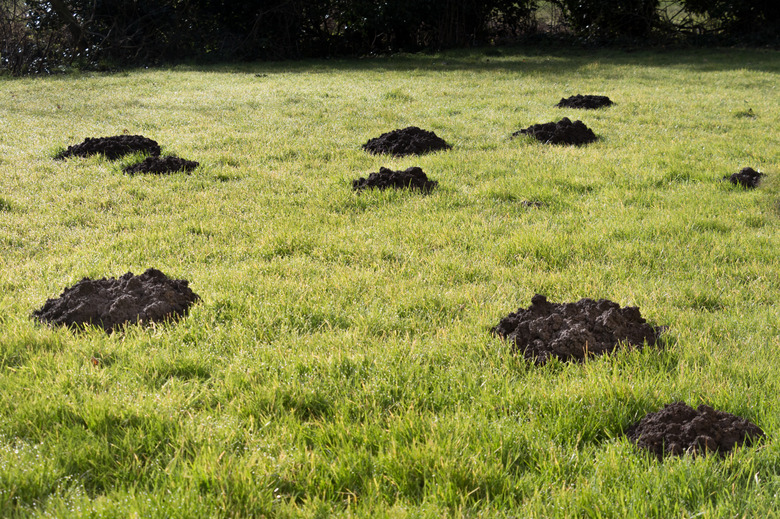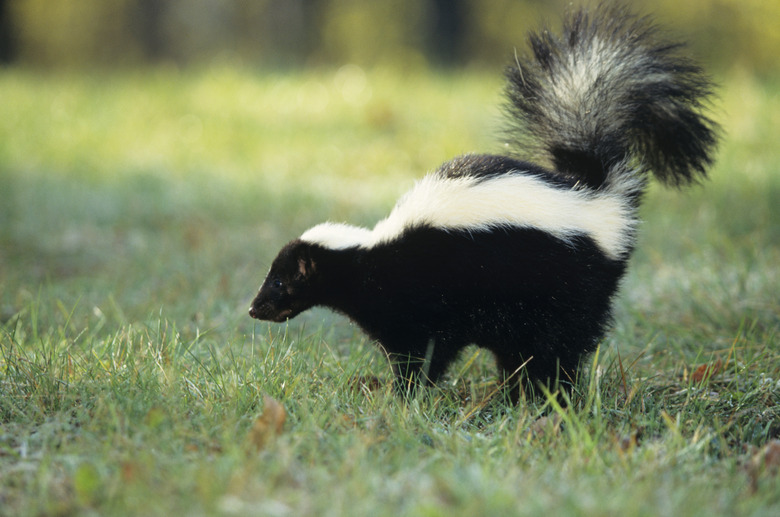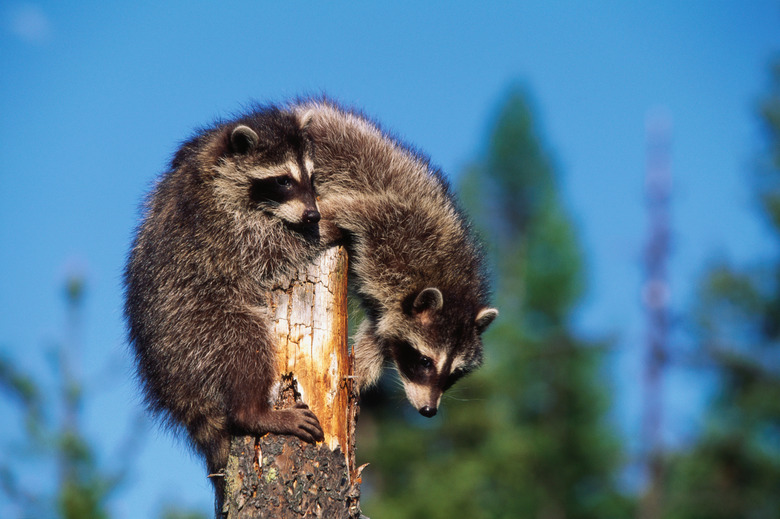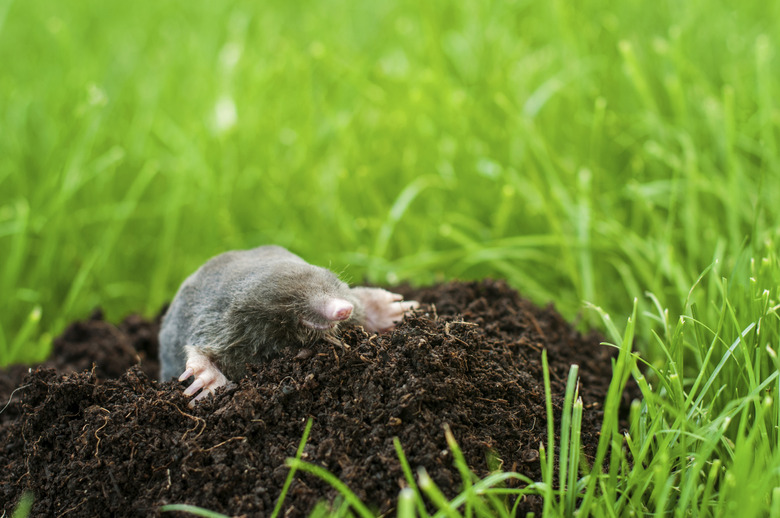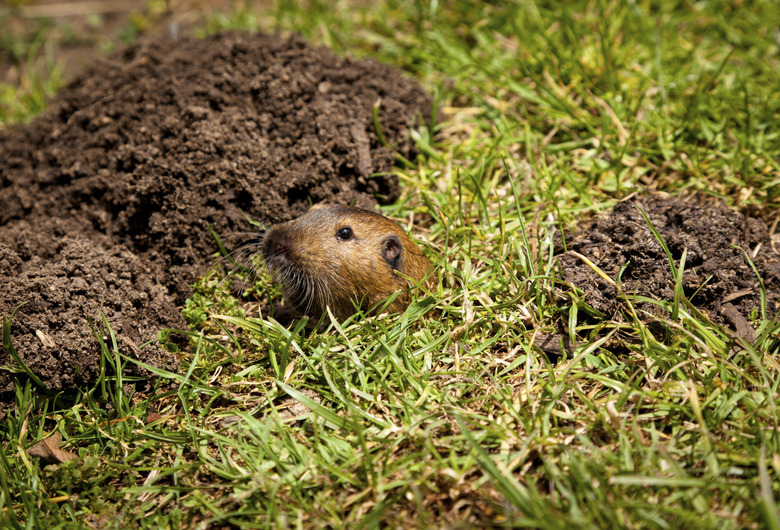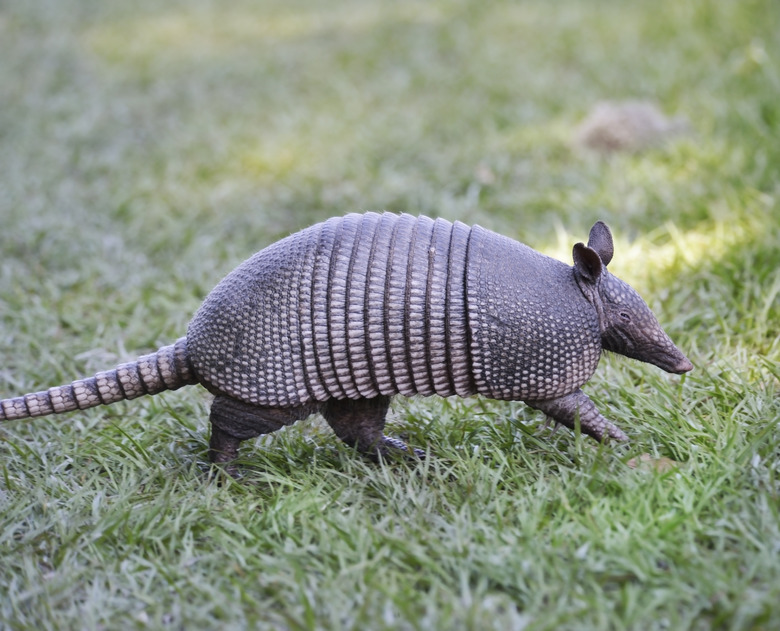What Animal Is Digging Up My Lawn?
If you go out to your yard one morning and find something has left holes, mounds of dirt and torn-up turf, you've been host to wildlife looking for food or a place to live. Most lawn damage occurs in the fall when animals are packing on fat to help them survive winter and in the spring when they are trying to regain lost weight and prepare for breeding. You often can identify your visitor by the damage it leaves.
Skunks
A bunch of small shallow holes about the size of a half-dollar coin in the lawn, surrounded by loosened soil, indicates you've been visited by a skunk. Skunks are nocturnal omnivores about the size of a house cat that occur throughout the United States. At least four different species of skunk inhabit the United States, with the striped skunk (Mephitis mephitis) being the most widespread. Using their snouts and feet, they make the holes as they search for earthworms, grubs and adult soil insects just below the turf.
Raccoons
If you wake to find large pieces of turf ripped up and flipped over, the culprit is probably a raccoon. Raccoons (Procyon lotor) have front paws like hands, which they use to rip up the turf as they search in your lawn for the same types of worms, bugs and grubs that skunks eat. But night-feeding raccoons prefer dining in newly laid sod and shallow-rooted grass because it is easier to tear up. Raccoons can weigh up to 20 pounds and can be found throughout the United States, except in the desert Southwest.
Moles
Small volcano-shaped mounds of dirt scattered around the lawn, and shallow meandering ridges running through your turf, indicate you are host to moles. Moles make the ridges as they tunnel to find earthworms and grubs that live just beneath the surface. The unsightly mounds are made of soil the moles push up to the surface when making deep runways and sleeping chambers. Seven mole species inhabit North America; the most widespread is the eastern mole (Scalopus aquaticus), which occurs throughout the eastern half of the United States Moles average about 7 inches long and weigh 3 to 4 ounces.
Pocket Gophers
If your lawn has small crescent-shaped or fan-shaped dirt mounds scattered over the turf, it is home to pocket gophers. These rodents occur throughout the western two-thirds of the United States in 13 different species. They average 8 to 10 inches long, with large incisor teeth and long front claws. Gophers dig long underground tunnels as they snip off and eat the roots of grasses, flowers and other plants, killing them. The most widespread species are the plains pocket gopher (Geomys Bursarius), which occurs throughout the Great Plains states, and Botta's pocket gopher (Thomomys bottae), which occurs in California and the desert Southwest.
Armadillos
If you live in the southeastern United States and find shallow holes scattered across your lawn, your culprit could be a nine-banded armadillo (Dasypus novemcinctus). These nocturnal, opossum-sized gray animals are distinguished by a hard, hairless outer shell that covers their bodies. They cannot tolerate prolonged freezing temperatures or arid conditions, so they don't pose a problem in northern or southwestern states. The animal digs holes in turf up to 3 inches deep and 5 inches in diameter as it searches for insects, worms and grubs. They also dig burrows 10 inches across and 3 to 4 feet deep in soft soil across their feeding territory. Each animal may have five to 10 burrows.
